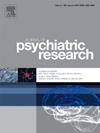Extended reality for neurocognitive assessment: A systematic review
IF 3.7
2区 医学
Q1 PSYCHIATRY
引用次数: 0
Abstract
Objective
The objective of this study is to evaluate the effectiveness, feasibility, and clinical relevance of extended reality (XR) technologies for neurocognitive assessment.
Methods
A systematic review of published literature on augmented reality (AR), mixed reality (MR) and fully immersive virtual reality (VR) technologies for neurocognitive assessment was conducted. Studies were included if they evaluated XR for assessing neurocognitive domains, with outcomes related to diagnostic accuracy or usability.
Results
28 studies met the inclusion criteria. VR-based tools (n = 26) were the most commonly utilized, offering immersive environments for assessing several cognitive domains including memory, attention and executive function. AR applications (n = 2) were less frequently utilized but showed promising potential in cognitive impairment detection. No studies utilized MR technology for assessing neurocognitive functions. XR technologies were found to be more sensitive, ecologically valid, and engaging compared to traditional assessment tools.
Discussion
XR technologies offer a transformative approach to neurocognitive assessments by providing immersive, interactive environments that go beyond the limitations of traditional methods. Despite their potential, XR technologies face limitations such as high costs and technical challenges like motion sickness. Future efforts should focus on improving accessibility, user interfaces, and incorporating social and emotional dynamics to create more realistic assessments.
神经认知评估的扩展现实:系统回顾
方法 对已发表的有关增强现实(AR)、混合现实(MR)和完全沉浸式虚拟现实(VR)技术用于神经认知评估的文献进行了系统综述。如果研究对 XR 用于评估神经认知领域进行了评估,并得出了与诊断准确性或可用性相关的结果,则纳入该研究。基于虚拟现实的工具(n = 26)是最常用的工具,可为评估记忆、注意力和执行功能等多个认知领域提供身临其境的环境。AR 应用程序(n = 2)的使用频率较低,但在认知障碍检测方面显示出良好的潜力。没有研究利用磁共振技术评估神经认知功能。与传统评估工具相比,XR 技术更灵敏、更符合生态学原理、更吸引人。尽管 XR 技术潜力巨大,但也面临着成本高昂和晕动病等技术挑战等限制。未来的工作重点应放在改善可访问性和用户界面,并结合社会和情感动态,以创建更逼真的评估。
本文章由计算机程序翻译,如有差异,请以英文原文为准。
求助全文
约1分钟内获得全文
求助全文
来源期刊

Journal of psychiatric research
医学-精神病学
CiteScore
7.30
自引率
2.10%
发文量
622
审稿时长
130 days
期刊介绍:
Founded in 1961 to report on the latest work in psychiatry and cognate disciplines, the Journal of Psychiatric Research is dedicated to innovative and timely studies of four important areas of research:
(1) clinical studies of all disciplines relating to psychiatric illness, as well as normal human behaviour, including biochemical, physiological, genetic, environmental, social, psychological and epidemiological factors;
(2) basic studies pertaining to psychiatry in such fields as neuropsychopharmacology, neuroendocrinology, electrophysiology, genetics, experimental psychology and epidemiology;
(3) the growing application of clinical laboratory techniques in psychiatry, including imagery and spectroscopy of the brain, molecular biology and computer sciences;
 求助内容:
求助内容: 应助结果提醒方式:
应助结果提醒方式:


